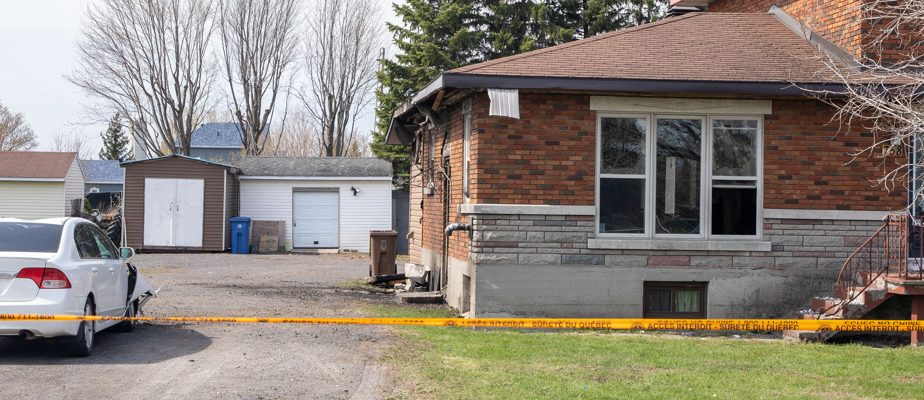The man who piloted the aircraft that crashed this spring in Saint-Rémi, in Montérégie, wanted to “put on a show” for friends who were on ground. The student was still in training, but had obtained permission from his instructor to fly solo, when the accident occurred.
This is what the Transportation Safety Board of Canada (TSB) concludes in an investigation report released Wednesday. The accident occurred around 7:30 p.m. on April 21, when a small aircraft crashed after hitting two residences and a vehicle in the area of rue de l’Église, in Saint-Rémi.
We learn in the report that it was a student pilot who was at the controls of the aircraft at the time of the events. The man in his thirties had sent a message to his instructor to inform him of his intention to fly with a friend, to which the teacher would have given his authorization, even though a student pilot cannot theoretically have a passenger on board.
The plane therefore took off around 6:30 p.m., with the student and his friend on board. According to the TSB, the weather conditions were “favourable” at the time and the winds were blowing “from the northwest at approximately 14 knots”.
It was almost an hour after takeoff, around 7:20 p.m., that things got tough. At this time, the aircraft flew over a residential area west of Saint-Rémi at low altitude “where an outdoor gathering of around fifteen people was taking place on private land,” writes the Bureau.
On this ground, one of the people recognizes the plane and calls the student pilot “to ask him to put on a show”. The call ended shortly thereafter, and quickly the pilot made an approach from the north toward the gathering.
-

COURTESY BST
An image provided in the investigation report gives an idea of how the aircraft fell.
-

COURTESY BST
There was extensive damage to the aircraft, particularly to its wings, as shown in the image above.
1/2
“Severed” electrical wires
In its report, the TSB notes that the plane quickly “initiated a pronounced nose-up, and following a maneuver that the investigation could not identify, it found itself in a vertical descent.” The car then “cut electrical wires before crashing into the roof of a car parked in the driveway of a house located approximately 100 feet from the gathering.”
A fire then broke out and many people rushed to the aid of the student pilot and his friend. Both men were seriously injured and rushed to a hospital. Fortunately, no one who was on the private land was injured.
According to the investigation report, the blaze then “spread to the house” and other facilities, before finally being brought under control by firefighters. A vehicle that was on site was also damaged. The plane was completely destroyed.
A common type of accident
For Jean Lapointe, pilot and civil aviation expert, this issue is troubling. “When you’re a pilot, you don’t let yourself be influenced by your friends. You don’t go out of your way to impress by going against the rules. Air shows, if that’s what the person wanted to do, it has to be done in accordance with people on the ground who kept all the people away. There is a whole protocol,” he says.
“The error in this is that the pilot did not assert himself by refusing to do it, especially since he probably did not have the qualifications to perform acrobatic maneuvers. Now, it will be up to Transport Canada to determine whether the student pilot’s license should be withdrawn,” persists Mr. Lapointe.
This type of accident, “unfortunately happens every year,” regrets the experienced pilot. “It’s a good thing that the TSB is putting it forward. In the pilot community, you have to learn from the mistakes of others. It’s just sad in 2023 that we are still seeing accidents like this, even though we have all the tools to properly supervise the drivers and train them adequately,” he concludes.
The TSB took advantage of the release of its report on Wednesday to remind that according to the Canadian Aviation Regulations (CARs), “it is prohibited to use an aircraft over a built-up area […] at an altitude less than 1000 feet above the highest obstacle within a radius of 2000 feet or less.”
Student pilots are also reminded “that solo flights are authorized only to practice maneuvers necessary to obtain a permit”. To ensure the safety of training flights, instructors must “evaluate and reinforce the adoption and application, by student pilots, of practices related to good discipline”.
“It is essential that instructors actively direct and monitor these solo training flights, although this may be difficult if student pilots are flying their own aircraft and instructors are monitoring remotely,” the Bureau concludes. .
